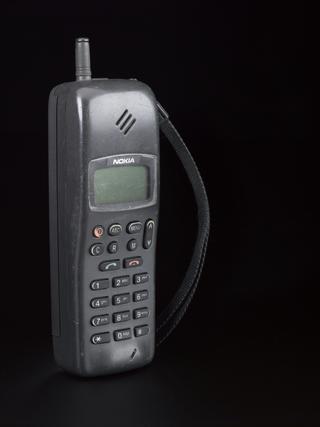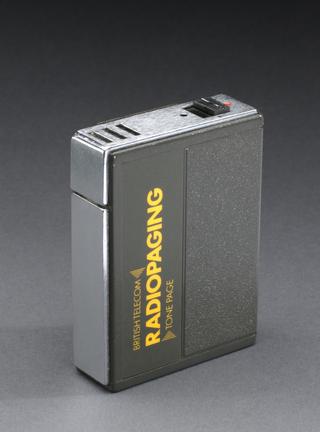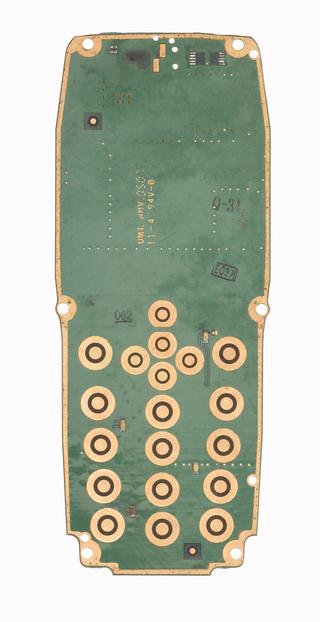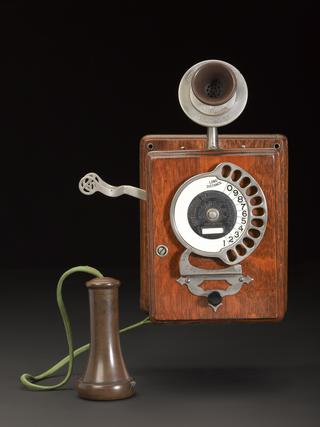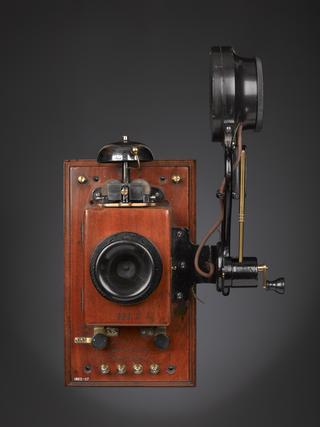
Philips TCD308 Mobile Telephone, 1997-2001




Philips Cellnet 'Diga' TCD308 mobile phone, made by Philips, France, 1997. CN: VYP09902E04442
Released in 1997, the Philips ‘Diga’ was a 2G mobile phone, supported by the GSM standard. 2G digital cellular networks made Text messages, picture messages and multimedia messages possible, creating a whole new way for people to communicate. The monochrome screen could display a single line of text with additional fixed icons. During the 1990s mobile phones rose in popularity as they became smaller and more portable. The decade saw a shift in how mobile phones were marketed, moving away from being a tool for business to being a mass consumer product. The Diga combined several features that developed during this era, most notably customisation. The keys 1 to 9 could be configured as hot keys where a specific function was activated by holding down one of the keys. It had a removable slider that protected most of the keyboard but did not cover the two rows of keys so that calls could be answered and made from the phone book.
GSM which stands for Global System for Mobile Communications, was a European standard for early digital mobile networks, meaning that mobile phone users could use their phones across the whole of Europe without having to buy a new handset in every country. First deployed in 1991, a key feature of GSM was the Subscriber Identity Module, commonly known as a SIM card. By the mid-2010s, GSM became the global standard for mobile communications operating in over 193 countries and territories.
Details
- Category:
- Telecommunications
- Object Number:
- 2008-5015/6
- Materials:
- plastic (unidentified) and electronic components
- Measurements:
-
overall (with battery): 162 mm x 60 mm x 30 mm, .177 kg
overall (without battery): 162 mm x 60 mm x 25 mm,
- type:
- mobile telephone
- credit:
- National Media Museum, Bradford
